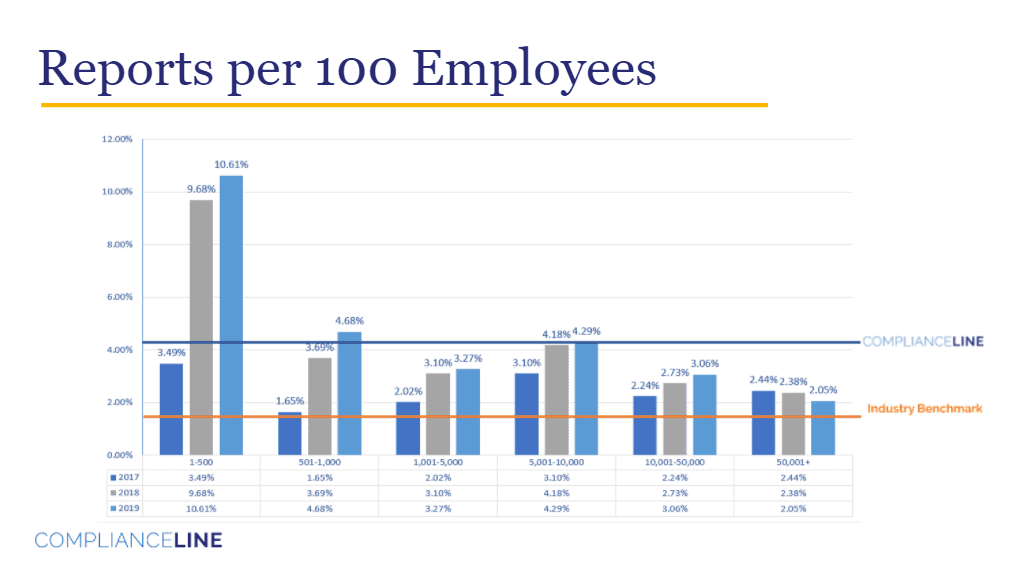Webinar: Insights from the 2020 Hotline Benchmark Report
For a copy of ComplianceLine’s 2020 Ethics and Compliance Hotline Benchmark Report, please download here.
Transcript for Insights from the 2020 Hotline Benchmark Report
Cathy Foster: Good afternoon, everybody. I’m gonna give this webinar a few seconds to fully load so that people can join. I see the attendees are still filing in. We’ve got a very nice number of attendees today. That’s very exciting to see. My name is Cathy Foster, I’m the Director of Marketing at ComplianceLine, and we’re very excited to share this information with you today. We’re going to be reviewing the insights from the ComplianceLine 2020 Hotline Benchmark Report.
I have just a few webinar logistics to cover with you as we get started. You’re welcome to ask questions and comment in the webinar control panel that you probably see on your screen. And we will be sending out a recording of this webinar, along with a certificate of participation, for each of you. And you will also receive a copy of the benchmark report as soon as it comes off the presses later this week. One of our team members will be following up with you to make sure you have a copy in your hands, or in your inbox. So, today, I’d like to introduce Nick and Giovanni Gallo, the co-CEOs of ComplianceLine. They’re very passionate about ethics and compliance and dedicated to making the world a better workplace through world-class compliance solutions and services. I’ll be going off-camera, but at this time, I’d like to introduce them and hand it over to them. And so, take it away, Nick.
Gio Gallo: Thanks, Cathy.
Nick Gallo: Thank you, Cathy. Thank you, everybody, for joining us today. So, let’s just dive in here. So, I’m Nick, and I’m here with Gio, we’re both from ComplianceLine. And ComplianceLine provides a wide array of compliance tools. So, we have specific insights into the ethics and compliance market that we wanna share with you today. But our tools really help organizations like yours reduce risk, reinforce culture, and these range from intake and case management, hotline solutions, credential monitoring and background checks, third-party investigations, compliance training and e-learning, data analytics, and exit interviews.
Gio: So, this week, ComplianceLine is really excited to publish this report. It’s our first hotline benchmark report, and we’re super excited to deliver this information to you as a resource to make you a better, more impactful, and more successful compliance professional. Let’s go to the next slide, please. So, the point of this whole thing is to provide you some information so you can measure your performance against what else is going out there in the industry and, you know, other people who are facing some of the same challenges as compliance leaders.
So, we want everyone to know that there is another voice and another viable option to partner and compare against. And what, you know, we really wanna encourage everyone is that if you wanna aim higher, then you’re in the right place. Our conversation today is gonna be talking about how we’ve seen clients outperform the industry and the things that have been kind of the average or the expectation on almost every benchmark. We’ve seen higher performance across the board in reporting rates, higher substantiation rates, lower anonymity, and what we’ll really be getting to, which is exciting, is seeing how we can get to quicker case closure rates. Nick.
Nick: And I think what this benchmark helps to underscore is the fact that an approach that puts people over profits and that applies common sense can drive some real powerful results across organizations. And what we find is that the strongest organizations, they use compliance, and HR, and ethics as a strategic lever for their organizational purpose, and they utilize their hotline in a strategic way and use it as a strategic tool to help drive those behaviors.
So, as we’re going through this stuff today, try to compare your results against the ones that we’re presenting here to ensure that you’re generating, you know, suitable performance from your program, that you’re substantiating the right amount of cases, that you’re following up with cases quickly enough, that you’re creating appropriate awareness for the intake channels that exist, and driving that speak-up culture that really generates all those positive externalities that we should expect and that we should be driving toward in our organizations. And just remember as we’re going through this, compliance is culture, and regardless of how your function is performing, whether it’s a brand new function or it’s one that’s been established for a couple of decades, there’s always room to improve. So, set some goals for yourselves to see how you can improve your performance in your organization.
So, as we dive into our methodology, we wanted to spend a quick moment kinda talking about how we got these numbers and what this data set that we’re utilizing for these benchmarks is comprised of. So, we’re measuring approximately 150,000 cases in 2019, we’re presenting data across three different years, ’17, ’18 and ’19, and the intake pool that we’re referencing against serves over 5 million employees across the world, across 700 different organizations.
Gio: Yeah. So, this is really exciting. There’s a lot that has gone into this report and, you know, we’re happy and proud to be the messengers of hundreds of thousands of reports and all of the work that’s gone into this from not just our team who put this report together but everyone who’s managed intake, done investigations, driven strategic initiatives in their compliance programs. We’re really proud to be part of this change that we’re seeing happen across workplaces across the world.
So, our overall effort here is to be transparent. So, we wanna show a range of performance data that are available. And just so you know, as we go through this, we’re gonna be making comparisons to the industry report, the industry benchmark, and that’s based on the 2020 Navex Benchmark Report, which, you know, from the data we’ve seen that people are sharing publicly is the one that a lot of people are referencing, and we wanna show what the data that we have is compared to that. So, the purpose for this, you know, and I imagine this is the reason why most, or all of you, are on today, is to drive improvement and effectiveness in your organization.
So, in that spirit of transparency, we tend to provide raw ratios, not bury things under averages of averages. We’ve tried to avoid, as much as possible, data smoothing, data manipulation, we have no hidden self-serving agendas here where we cut a bunch of things off to kind of give a number that we think is gonna make our case best, because we wanna present to the industry something that is transparent and allows people to elevate the impact of their compliance program.
So, broadly here, when we’re presenting things, we’ve focused on a principle of conservatism. So, this is around not being complacent and, as much as possible, looking at the thing that is most likely to give us a comparison to making ourselves better. So, if you wanna accurately measure your performance and you’re comparing your organization’s actual reporting rate per 100 employees, which we’ll get to in a second… You know, some people are looking at a median, for example, of one-and-a-half reports when the average is closer to four, and we think that looking at that average is more conservative because that’s gonna get your eyes on the things that are most likely to illustrate a gap and push you to perform better. So, let’s talk about the six metrics that we’re gonna be reviewing today. Nick.
Cathy: Nick?
Gio: Nick, you might be muted. Yeah, I think we’re having some audio issues. I’m gonna jump in and go over these. So, we’re gonna talk about these six metrics. Are the right people reporting? What is your reports per 100 employees? You know, are people comfortable reporting or reporting anonymously? What reporting channel are those coming through? How many of your reports are of a high severity? How many reports are getting validated and substantiated? And then, all of this kinda comes down to looking at issue days open. So, we wanna present this framework at the bottom here with our equation here of what it means to drive better results.
So, you know, everyone’s conscious of risk, a lot of things around compliance and ethics is around managing risk. Well, what does that mean? There are 100 different ways to look at it. What we think, in the context of this benchmark report, is looking at what drives the metrics on do you have good employee engagement. And then, we’re gonna talk about do you have the proper empathetic, adaptive intake methods executed properly, and then do you have systematic follow-up. And the case we’re making is that when all of those are together, then you’re gonna see that show up in your risk metric of closing cases faster and all of the things that that helps.
So, these six metrics kinda fit into this framework, and we wanna provide this as kind of a guide as we go through this so you can kinda track where we are. And we think that, you know, you can identify what breaks or differences you have in those components to get to your overall case closure rate and your management of risk for all of this effort you put into it. So, next slide, please. So, the first item in our framework is good employee engagement. So, we’re gonna start with that, and then we’re gonna move through it. Nick.
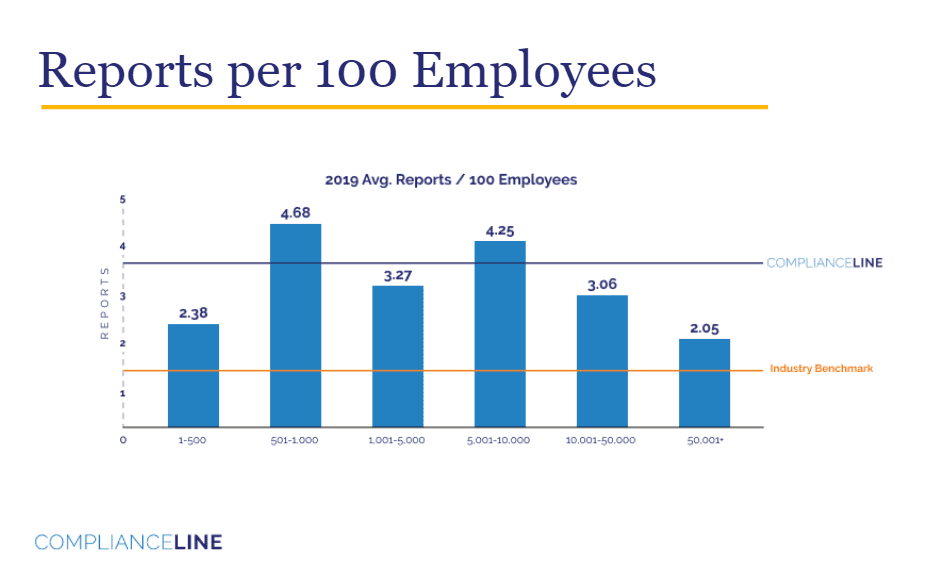 Nick: Yeah. And this all starts with your employee base. You need to recognize that your hotline is the start of a conversation, and that conversation, which obviously has a back and forth, always requires the employees to initiate it. They need to see something, they need to believe in this system, and they need to pick up the phone or hop on the web to go ahead and make that report. So, these first two benchmarks that we’re gonna be talking about, reporting rate and anonymity, give some indications for that level of employee engagement. So, let’s just jump right in here.
Nick: Yeah. And this all starts with your employee base. You need to recognize that your hotline is the start of a conversation, and that conversation, which obviously has a back and forth, always requires the employees to initiate it. They need to see something, they need to believe in this system, and they need to pick up the phone or hop on the web to go ahead and make that report. So, these first two benchmarks that we’re gonna be talking about, reporting rate and anonymity, give some indications for that level of employee engagement. So, let’s just jump right in here.
So, we’ve all seen the studies. Can you go to the next slide, please? Oh, thank you. So, we’ve all seen the studies, and we know that more reports are better, right? Today, we’re gonna be answering how to get this rate up. So, if more reports are better, and we know that 6 out of 10 instances of workplace wrongdoing go unreported, and we know that the reporting rate spans greatly between sort of the most ethical and the least ethical organizations, with the most ethical having 84% of employees willing to raise their hand when something is going wrong versus 33%, or a third, in ethically weak organizations who are willing to raise their hand, our job is to try to get this rate up.
So, we also find that organizations that have higher reporting rates, they tend to have performance that’s correlated with fewer fines and lawsuits, better employee engagement, and lower employee turnover, which we all know can be kind of a silent killer in an organization. So, this graph right here is showing, on the vertical axis, on the Y-axis, the number of reports per 100 employees. And then, each of these buckets represent organizations that fall into these different categories, ranging from, you know, micro organizations with under 500 employees, all the way on up to organizations with over 50,000 employees.
Gio: Yeah. So, we’re gonna get into results, and for each of these things, we’re gonna be talking about what we can do to improve this. But as you look at the lines across this graph here, the industry benchmark would say that the number you wanna look for is 1.4 reports per 100. And what we’re seeing in our data and what’s driving an outsize performance, one contributor is this number of about 4.03 reports per 100. So, as we look across companies of different size, smaller companies tend to have this tighter-knit culture and, you know, really kind of perform a lot differently from the rest of the population. And then, we see, really, as companies get bigger, their rates tend to decline and you have this kind of higher rate of standardization in large companies that explain some of that drop-off as companies have a more structured, more scalable compliance organization and processes.
So, let’s go to the next slide and talk about what we can do about this. So, we’re gonna be talking about this for pretty much each metric, and there are a few things that are gonna drive negative outcomes or negative performance against the benchmark in your organization, and you wanna be looking for these things. So, in this case, why don’t people report, why don’t people call. One thing is gonna be maybe that they have fear of retaliation. They might not believe that management cares about the report or that they’re gonna actually do anything about it. They may just not know about reporting channels and not bring it up. Or you might wanna look into is the reporting process painful, does it meet people where they are, does it allow them to feel comfortable, and safe, and assured of that management backing for it.
Those are all things that we’re gonna be talking about throughout these different metrics. But we believe that you really have to look through those before you come to the conclusion of, “Hey, we’re not getting any reports because just nothing is happening.” Because we have a massive data set here, we have a lot of companies across a bunch of different industries doing this, and you really need to look for these negative drivers for all of these different metrics we go through before you get to the point where you say, “Okay, well, there’s probably just nothing going wrong in my organization.”
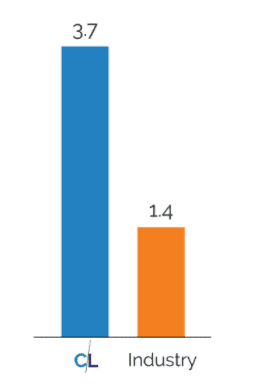

You should also be focusing on making sure that your intake is as humanized as possible. So, this goes back to that empathy angle that Gio mentioned a moment ago. So, we wanna have a simplified intake process that doesn’t treat your employees and the people on your team like a number, they wanna feel like a human being, and we wanna emphasize empathy and sort of an adaptive interview over clock-watching, making sure that, you know, we get people off the phone quickly. Deprioritizing efficiency and prioritizing empathy is what’s gonna allow us to get better information and make that process itself more sort of palatable for the person calling. And I think you also need to recognize that this is the start of a conversation. You’re gonna hear some of these trends throughout our discussion today. But if you’re using your hotline like it’s just a comment box and not recognizing the conversational nature of it, then you’re gonna leave a lot of sort of value on the table and a lot of effectiveness on the table.
And then, finally, you wanna reinforce that culture of trust. So, this means closing your cases quickly and communicating back to the reporters, both on a macro and micro level, which we’ll get into, you know, a little bit later. So, again, counterintuitively, more reports is better, we wanna drive that rate up because we know everything is not being reported, and we know that beyond a certain size, this stuff is just gonna happen, right? And I think any initiative that you drive, it’s important to realize that you can’t, like, drive a speak-up culture, you can’t drive this into people. What you’re able to do is create the circumstances for success, you’re able to, like, enable this type of culture. But for it to be authentic and real, it’s gonna spring up organically within the hearts and minds of your team, and that’s really what we’re gonna be going for.
So, the next item on here is anonymity. And, again, we’re talking about good engagement, good employee, you know, willingness to raise their hand and to take ownership for their organization about things that are going right and things that are going wrong. So, issue anonymity is a critical employee engagement data point because it really gives you that insight directly into the organizational trust that your organization has established with the workforce. What we have found is that there’s typically kind of an inverse relationship between anonymity and cultural trust. So, if you have a high anonymity rate, there may be an indication that there are some trust issues in your organization.
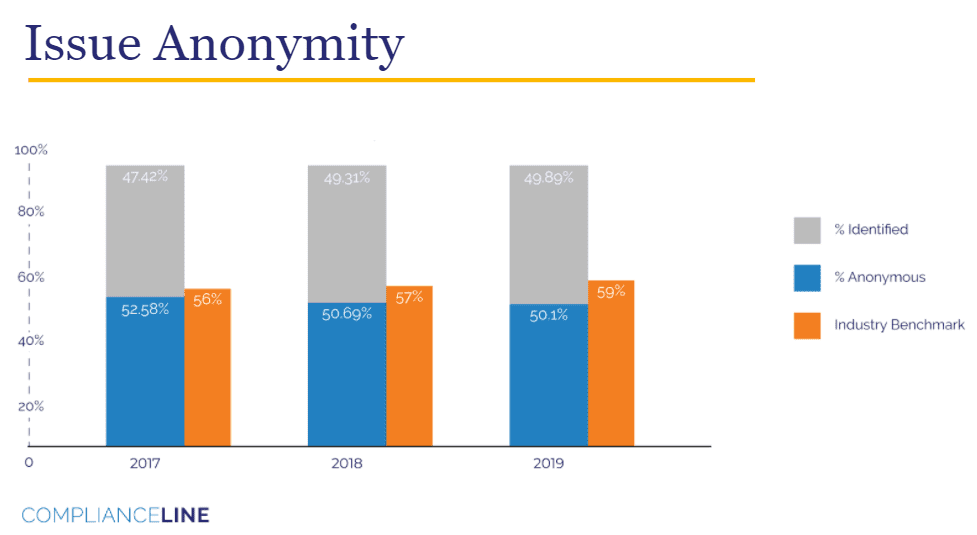

So, as you think about people who would fall in those different buckets, it shows the complexity of interpreting anonymity and how you really want to look at this in light of your reporting rate and your anonymity rate. So, let’s go to the next slide, and we’ll talk about that. So, it’s hard to, like I said, look at anonymity just on its own. If you’re getting a lot of reports and you have a low anonymity rate, that’s in this top right here, that can be a good indication, that means a lot of people are engaging and a lot of those people feel comfortable providing their information to the compliance team. If, on the other hand, you have this high anonymity rate and a low portion of reports, then that’s heading in the wrong direction. So, Nick, talk to us a little bit more about kinda how people fall out on this graph.
Nick: Yeah. So, I think this matrix helps kinda outline a couple of different states of the world and it helps to illustrate how this one metric can’t and shouldn’t be viewed in isolation. So, as you look across these nine different states of the world, which of these are the worst-case scenarios, which ones are the best? So, let’s look at number seven for example, which Gio just described. Here, you have no one reporting, and anyone who does report is anonymous. So, that could be an indication that there’s some kind of a trust issue with the line, it’s not being utilized right, and you’re not getting the bang for the buck or the bang for the effort, so to speak.
Let’s look at number one for example. Here, you’re getting tons of reports and an outsized anonymous rate. So, on the one hand, it’s really good that people are reporting, you’re outperforming, you’re getting something more than 4% reporting rate, but what you can work toward is a higher identified rate, so you can start to pinpoint some trust communications and some more communication back to reporters to help, you know, increase that organizational trust. So, you know, we just present this so that you can kinda think about where you may be on this matrix and help you formulate some ways to get closer to that upper right-hand corner, which is kind of our best-case scenario.
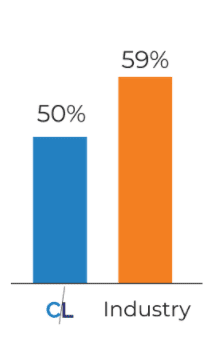

Gio: Yeah. So, as a general implication, we see that organizations that have too high a level of anonymous rates are gonna have lower employee engagement, a high lack of trust across their employee base, and that can lead to higher employee turnover and a potentially higher lawsuit rate. So, those high rates, you know, if you’re above kinda 60% to 65%, you’re gonna want to examine that and see if it’s due to fear and mistrust. And, ultimately, you can do some of this, right? We’re providing you the very objective hard numbers around where to look.
Part of the solution is gonna come from some softer things like doing some roundtables or talking to reporters and examining even just yourself or your team, examining your intake process through a test call or, you know, just imagine what it’s like if someone doesn’t kind of live and breathe ethics and compliance and see how you can build some more trust through that.
And, you know, ultimately, you can make an impact on this by asking, “Do employees know about the hotline or know about the reporting methods? Because some of this rate might look different if a bunch more people are reporting and those people are comfortable identifying themselves.” So, let’s go to the next slide and talk a little bit about some of the ways how you can triangulate your anonymous rate with some other data points because this is something that can really empower you to find something that is impacting a few different things instead of just looking at one of these metrics in isolation.
Nick: And I think you’ll see as we go through this presentation, none of these items are just silver bullets that are gonna just be the single barometer you need, some of them have more sort of interpretive value than others. But looking at these benchmarks in conjunction with other data points, either in this benchmark report or other data points that you have at your fingertips, are gonna give you some more actionable insights into what part of the garden need to be weeded, right? So, you can compare this first to your issue rate.
So, again, if you have a really low reporting rate, try to drive more reports. And you can do that with education, you can do that with more awareness, in general campaigns to build trust in the organization. A push from the top that says, “Hey, it’s the speak-up culture. It’s time for you to raise your hand” can do a lot to get you that initial push and more people engaging with your line. Another thing you can compare this anonymous rate to is the level of severities.
If you’re getting less than 10% of severe cases, which we’re gonna talk about some more a little bit further on in the report, and, you know, your severity definitions are dialed in, if you have this with a low anonymous rate, there are likely severe issues that are not being reported. So, again, you can drive some awareness, you can drive some roundtables or some fair process to get some ideas on how we can reduce the risk pockets that could be popping up in the organization.
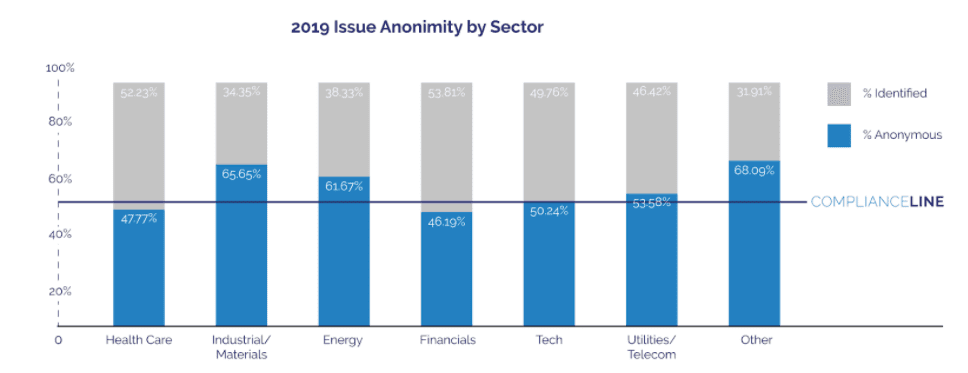

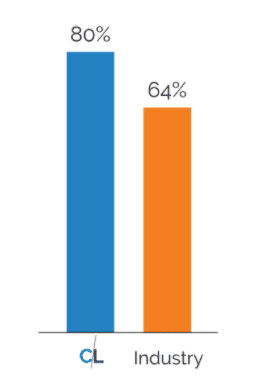

Gio: Yeah. So, the next element in our framework is gonna be talking about this empathetic and adaptive intake. So, we’re gonna talk about, you know, how that can lead to a faster closure rate by looking at our channels, how intake is handled, and then what’s coming through those channels. So, let’s go to the next slide, and we’re gonna talk about those reporting channels.
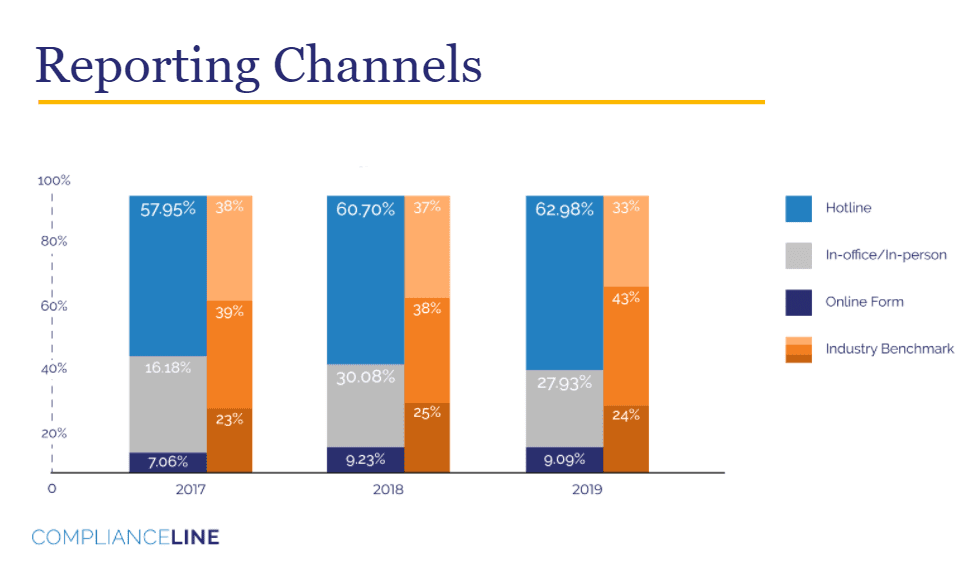

And we just wanna note that when this is done properly, despite the ongoing generational shift that we’re seeing and everyone going digital native and stuff like that, the hotline is still the largest channel, that when it’s engaged properly and run properly, there’s still a lot of participation in that channel.
Nick: Yeah, and I think that’s because hotline is just by far the most superior information-gathering channel when it’s done right, to Gio’s point. So, it offers the anonymity so the people that aren’t willing to come report it to your face are gonna have that chance to report it without any of the fear that comes along with it. And when it’s done right, when we have an adaptive interview, which means that we’re not just asking five questions but we’re gonna let that conversation go where it may and look under all the appropriate rocks, we have a way to get much better information.
So, it’s just important to recognize that, you know, every call is different, every person is different, so that empathy and that adaptation injected into the interview process allows for much better information to be gathered. And when you can prioritize information-gathering through an adaptive interview over efficiency, yes, those calls may take longer, but at the end of the day, the employee experience is gonna be way better and the information that the investigation team can hit the ground running with is gonna put them in a much better spot.
So, what this is all boiling down to is the fact that, for some things, for particularly things that are covered by these intake solutions and these hotlines, people wanna talk to a human being. And I think, while this may come to a surprise for others who are maybe anchoring to other numbers or reports that are out there, I think that in our own lives, this is mirrored.
Like, for example, let’s think about Amazon, right? There was a few years ago where you couldn’t find a customer service number on Amazon. Now, between 20% and 50% of customer service issues are handled by a call center because, again, for some things, people just wanna talk to a person to get their questions answered and so forth. And anecdotally…
Gio: Especially if that process works well, right?
Nick: That’s right.
Gio: A frustrating person-to-person interaction, people are gonna abandon for something more restrictive, but if it works well and it’s engaging, people use it more.
Nick: Yeah, and I think that anecdotally ties into this next point, which is that this is where we see the most meaningful shift in report volume from clients who transitioned from other providers. So, this is probably, from our understanding and our conversations with clients who have transitioned recently, they attribute this to the different intake process and the different things that we emphasize in our intake process. But regardless of the reason, the increased reporting tends to fall to the hotline.
So, what affects these channels? What are the things that drive changes in the mix across these different channels? So, one is kind of trust in the hotline. So, if there’s higher trust in the hotline, if it’s a nice process that’s not as painful, we’re gonna have more people pushing to the hotline. Another thing is gonna be driving a knowledge to reporters and to employees on where they should go to report. Do they have that website, the web form? Do they have that phone number at their fingertips that they can pick up the phone on a break and make that report?
Gio: 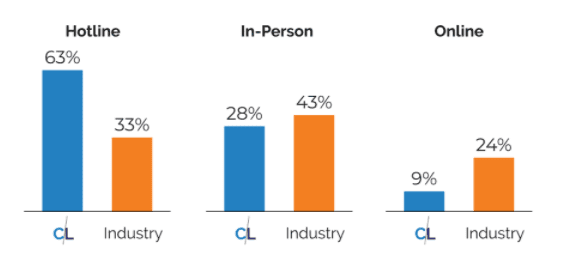

So, you wanna balance those things as you go into this and make sure that, as much as possible, whatever is appropriate for that channel, you have that right level of adaptability which allows room for empathy and engagement. So, let’s go to this next one. And we’re gonna talk about severities here. So, as with everything in risk management and really kind of everything in life, there’s this dispersion of different levels of intensity, right? So, within severity and the risk of your issues, you’re gonna have some really risky issues that need a lot of attention really quickly and they need to be addressed in a different way, and then you’re gonna have this kind of middle of the bell curve of kind of the normal things that you need to turn through.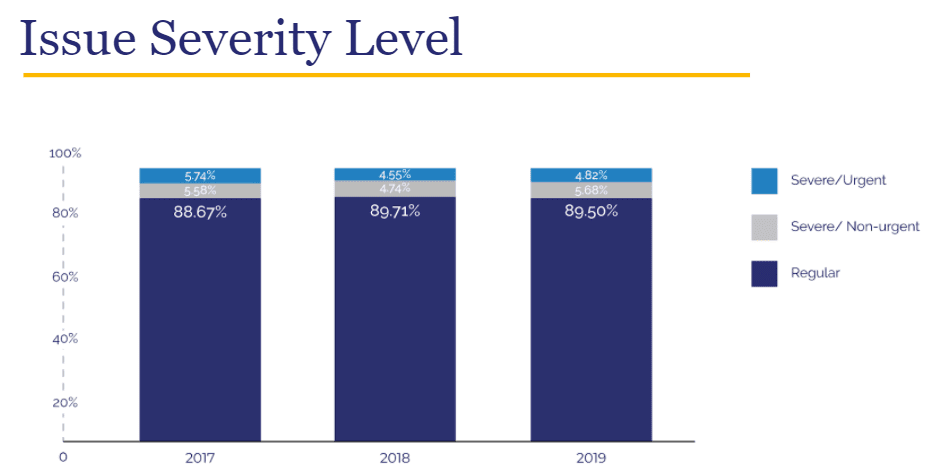

So, we label things on three different levels of severity. Our first two, level one and level two, we define as generally severe issues. Level one being those highest priority, it’s an imminent ongoing threat, it needs immediate escalated notification. Then, level two is generally kind of the same type of event, it’s severe but it’s not happening right now, but it still has that immediate notification. And then, level three is everything else and, you know, something that follows the standard process. But to that point about risk management, we think that it adds a lot of control and saves a lot of chaos and mistakes by having a clear sense of where the most severe issues with the most risk are within your overall set of issues. So, let’s go to the next slide. And as you see here, those three levels of severity we just discussed are shown here with severity one at the top, severe and urgent, level two, severe non-urgent, and then your regular ones after that.
Nick: So, you can see that the mix of calls across these different years have remained really stable. So, we have a very statistically stable sample set that we’re using for this, this is just another sort of data point around that. And in 2019, 90% of our calls were non-severe, they were just kinda regular run-of-the-mill calls. With the remaining kind of 10%, 4.8% were urgent and 5.7% were non-urgent. That remaining kind of 10% seemed pretty stable across the years analyzed. So, anecdotally, higher-risk industries, as you would imagine, tend to have higher severity rates. So, healthcare, for example, which is highly regulated, has a severity rate that was kind of in line with the average, while industries like tech and utilities have relatively low severity rates of under 2%. So, compliance leaders need to know whether high-risk issues are being reported in their organizations. So, if your severity rate is significantly higher than kind of that 9% to 11% area, you need to kind of diagnose why.
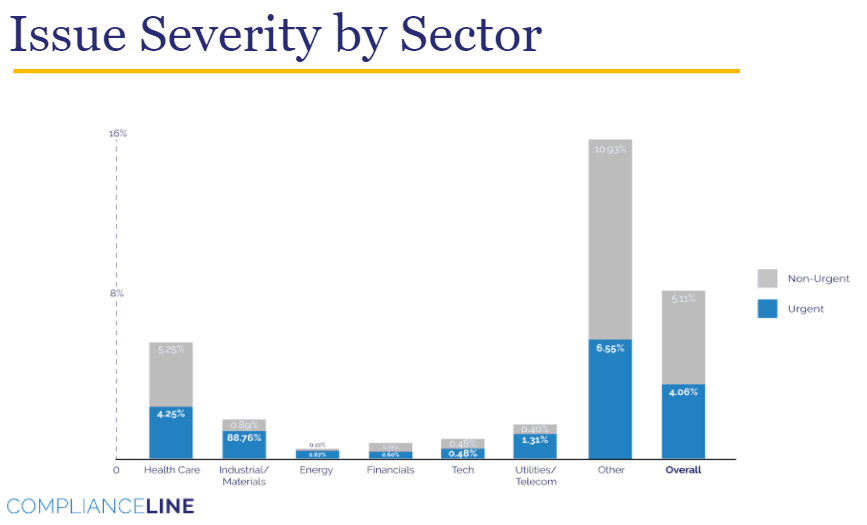

So, if you’re having a ton of severe reports, and as you get into those severities, you start to recognize, “Well, this isn’t really a four-alarm fire, this isn’t really an imminent danger,” then you’re experiencing some of that type I error or that false-positive risk, and you can fix that by just changing some of your definitions. Finally, if your line is sort of a general use, and the scope of your line is dialed in, and your definitions are kind of dialed in, and you really do have a true high level of severe issues, well then those are gonna be high-confidence indicators that you may have a systemic risk issue in your organization. So, look here to apply the appropriate responses.
Gio: Yeah. So, those might be some drivers of some problems that, you know, just your sample or the purpose of the line might be driving that, you might be defining things in an inappropriate way, or maybe too loosely, or you might actually have a systemic risk. So, you wanna look at some of the things that we’ve talked about, the awareness of the line, so are people aware of how your different reporting avenues should be used, how are you defining those. And then, if you’re in that third bucket, you need to dig in and trace that systemic risk with some operational issues and potentially training.
So, let’s move on to kind of the third leg of the stool. We’re gonna talk about systematic follow-up. So, we’ve talked about how your intake methods are the start of a conversation, you should drive that employee engagement, and then we’ve talked about the way that you do this intake, how reports are coming in and how people are treated are big contributors to what the performance of your case closure rate and the overall risk in your system is. So, Nick, why don’t you take us through systematic follow-up?
Nick: Yeah. So, now we’re gonna talk about the investigation side and we’re gonna discuss the importance of that consistent follow-up that Gio just mentioned. So, remember, the goal here is to close your cases faster, and we’re discussing a framework that helps ensure that this is occurring on a consistent basis. So, if we dive into the first benchmark in this category, we’re talking about issue validity. So, issue validity is whether these are valid issues or not, are these cases being substantiated or not. So, validity is influenced by a couple of things. It’s influenced by the quality of the reports, so, like, do your people get the purpose of your line, do they get what they should be reporting, and are they reporting the right things. And, separately, the quality of your investigation, so is the investigations team sufficiently, you know, what we say, bottoming out the investigation, is it looking in every single nook and cranny, and is it working hard to substantiate cases that are substantiatable.
Gio: Yeah. So, this graph shows a relatively stable rate of substantiation around kind of 61%, 62%, 63%. And, obviously, this is an important piece for your team and your follow-up, both for the information you get and how difficult it is to come to a conclusion on something. So, this validity and substantiation is really a big driver of the value that you’re getting out of your intake methods. And I just wanna note here that we’re seeing a 1.5X, a 50% higher substantiation rate than this industry benchmark. And that’s really exciting for us because that means that, you know, our clients are getting more reports that have good information in them that they can make sense of and they’re getting engagement around the right things. You know, imagine if you could eliminate almost half of your unsubstantiated reports and you’re either not kinda spinning your wheels on those or you’re getting information that is confirmable or you can substantiate it.
So, just a little detail inside these data. We see larger organizations seem to have a higher substantiation rate, kind of demonstrating some of that professionalism and the return on some of that investment in these processes. And it was almost at 84% for large organizations in 2019. And what we’ve seen is that at a certain size, organizations kinda pass this tipping point where they have scale and their headcount in the compliance and ethics team, their budget and their processes, and the purpose of their intake is well-established, and then that’s paired with strong investigations that, you know, find some of those pieces that you need to substantiate and that all comes together really well for those at scale. Obviously, you know, we can’t snap our fingers and get to scale, but I think it’s helpful to think about some of the things that drive some strong performance at an organization that has kinda been through the paces a bit more.
So, what drives that substantiation rate up or down? It’s generally influenced on two sides, the employee side and the investigation side. So, the reporter needs an understanding of the purpose and needs to understand what information is needed to validate something. And then, on the investigation side, you can achieve…or you might see lower rates due to maybe not following up on investigations as thoroughly enough, or you might look for low substantiation rates coupled with high case closure times for clues. So, if you keep looking at something for weeks and weeks and weeks and you can’t substantiate it, then that’s gonna give you an indication that you’re gonna see pop up in your case closure time and in this issue validity insight.
Nick: Yeah. And so, to that point, I think if you have an issue in this benchmark, if your investigations are taking too long, to Gio’s point, this is where you wanna start that investigation side, and you could set up smart goals. Everybody should know what smart goals are at this point. So, those are specific measurable, attainable, relevant, and time-bound goals to improve your investigations operations with sort of periodic reviews and seeing what’s open and so forth. Or you can consider outsourcing investigations to increase efficiency, savings, effectiveness, and get that third-party protection in the mix. If you’re confident that your investigations are dialed in, what you wanna do is focus on building trust in the reporting process. And you’re gonna do that through, again, sort of cognitive psychology-based awareness protocols and programs and making sure that that adaptive, ethical, empathetic interview is in place for intake.
So, the next one here, this is maybe the granddaddy benchmark of them all. And this one, when coupled with your reporting rate, can really provide you some high-level quick insights into the effectiveness of your program at large and your hotline intake conversations at large. So, we all cue in on issue days open. This is what our bosses are probably gonna be keying in on as one of the main benchmarks, and this, again, could speak to a lot of health of the organization. So, we all know what the industry best practice is, we wanna get these cases closed in less than 30 days, and that’s gonna allow us to avoid undue risk in the system, undue lawsuits, penalties, fines, and things like that.
Gio: Yeah. So, you know, I just wanna recognize that as you’re comparing your organization to these benchmarks, we wanna give people kind of hope and insight into building for a stronger future performance. And if you’re not hitting these, we hope that there’s some things that you’re taking away today that can help your team do better. By and large, most, if not all, of the people we meet who pour their heart and their work into this ethics and compliance work, they want this done right, and we’re all dealing with a bunch of different constraints that at times can be hard to kinda figure out how we can make that better. Everyone wants to get their cases closed faster, everyone wants this work to be clearer and get more visibility into their organization, so let’s talk about some things that you can do. Let’s go back there. So, these cases need to be followed up on and investigated in a timely manner. Cathy, can you go back a slide, please?
Obviously, this helps avoid lawsuits and fines and can reduce fines if it’s done consistently and people see that you’ve kind of been putting your due diligence into the process. Reporters wanna know that speaking up matters and that their concerns are taken seriously, and a timely response whenever possible conveys that message. So, overall, reports within our benchmark report remained open for an average of 23 days. So, that’s an average, and that’s 50% faster than the 45 days…you see these orange bars on here…compared to in that industry benchmark. But even more interesting than that, and this gives us confidence in the relevance of this metric, the distribution of cases across those different timelines was also stronger within our representative set here.
So, 80% of clients in this benchmark study were closing their cases in under 30 days, and only 5% took longer than 90 days. So, that’s 80% quickly and 5% taking a long time compared to only 20% quickly and over 30% in the industry benchmark, which is approximately a 7X increase in long-dated cases that take a long time to close. And we’ve seen also, you know, improvements that people have invested in this process cut that over 90-day bucket almost in half over our measurement period, which just speaks to the sense and the conclusion that this can be impacted and you can do things to get those long cases closed sooner. So, let’s go into some insights and talk about what we can do about this.
So, there are some things that are gonna be the biggest drivers for you having a lot of cases that take a long time to close. So, you might have really complex cases, so that might be just something that you’re dealing with. The amount of information gathered in that initial interview is really a key driver for this. If you can really hit the ground running, and all of the kind of essential, basic questions have been asked, and some of the inferences that come from questions that maybe are not gonna be in a really overly restrictive, you know, “It’s adaptive and it has machine learning” kind of logic tree that are built into some web forms, if you have an actual empathetic interaction with an adaptive interview, you’re gonna get more of that information. And some other things that might drive a bad outcome are the effectiveness and consistency of investigations in your operations, and then that clarity of communication back to your workforce can help kind of seal this up and close an issue out.
Nick: So, if most of your cases are not closed in less than 30 days, there’s a few things that you can do. So, the first thing is to make sure you’re getting an adaptive interview, make sure that that correct empathetic adaptive interview style is being employed on a consistent basis because that’s gonna help you get better information and makes the investigators’ lives easier because they can really hit the ground running. You can separately work on your internal processes and focus on just lowering case closure times. Like the old adage says, “You can’t manage what you don’t measure.” Simply by starting to measure your outstanding cases, looking at that on a monthly basis, and putting a concerted effort into lowering that is gonna help you drive that down.
So, you can use an open case tracker, you can use an aging report, you can meet periodically with your team to push for those quicker closes, and really try to, again, using smart goals, drive increased consistency, shrink that standard deviation of case closure times down, and try to drag that average down as well. Separately, you can make sure that you’re communicating back to folks. So, clients that typically had long case closure times tended to have a coincidentally higher rate of follow-up calls in their mix. So, your communication back to the workforce can be done in a micro and a macro level, right?
So, on a micro level, that’s simply providing findings of the case, how did you rule on the case, what recommendations is the organization putting in place as a result of that report, putting that down on paper and making sure that that reporter has that should they call up for a follow-up. And then, on a macro level, you can communicate findings back to the organization on a broader level. And that’s gonna be through training, that’s gonna be through specific policy changes, or personnel changes, or just whatever those appropriate responses or actions, if those are public enough and, you know, those are kind of proclaimed from the rooftops, then that communication loop will start to get closed, and that conversation that you’re trying to keep going will finish.
Gio: Yeah. So, let’s go to the next slide. I wanna bring you back to this framework that we’ve been talking about today. And we really hope as we wrap up here… You know, feel free to start putting some questions in the chat. But we hope that this gives you some clarity and a path forward to make your place of work better, safer, and more engaging. Because what we’ve seen throughout these data, and I think it resonates with a lot of the hearts of the people leading our industry, is when your people feel like their voice matters, and they’re educated about your intake channels, and when you have right intake in place, where you have empathy, and the right channels are open, and the right directive’s in place, then your investigations team is gonna follow up on cases effectively and they’re gonna communicate and respond effectively, getting down to, you know, the end of our equation, and you’ll be closing cases faster. So, I just wanna be clear as we talk about this, that that is a measure, that’s not a goal in and of itself, right?
Nick: Right.
Gio: Faster closure cases, there are a lot of things that you could do that would mask the health of your organization, but we think when all of these things come together and there’s authentic, engaging, empathetic interaction throughout your compliance function, then that fast case closure rate is gonna give you a pretty reliable indication of health. And if you can get all of these things together, this engagement, this intake, and this follow-up, then you’re gonna see a lower monetary risk, you’re gonna be more responsive to employee concerns, you’re gonna reinforce a strong culture that includes a willingness to speak up for your workplace tribe and look out for the people around you.
And, ultimately, what it’s gonna provide is you and your team are gonna be recognized for the compliance, and ethics, and HR team being a strategic force rather than just, you know, someone kinda fighting for budget and viewed as a cost center. It helps us to be viewed by our peers in the executive teams as a team that is really having a strong impact on the entire organization in a positive sense, and not just defending against risk but also driving us forward into best practices and into a workplace that we can really be proud of, not only working at but also shaping for the better.
Nick: So, while much of what we discussed today… You can go to the next slide. While much of what we discussed today is kind of general in nature because we’re drawing conclusions from a massive sample of, you know, 150,000 reports, it’s important to recognize that the principles that we discussed, and how these levers move, and the actions that you can take to reinforce these cultures that were kind of, you know, meant to care for, these principles can be applied kind of regardless of your unique situation and your unique organizational needs. But this decade is gonna be the time where we can break out of this old 90-style kind of cost center mentality and we can elevate our profession to become this strategic lever in our organizations. Now is the time for this to happen.
Gio: Yeah, it really is. And this is an exciting time, I think, for our whole industry as we’re empowered and strengthened by the visibility and the tools that we get. And at ComplianceLine, we really just deeply believe that by ascending beyond the numbers and using our tools to influence organizational behavior, we can break out of that cost center box and really get to this new normal that is not just trying to shoot for what we’ve seen as average and, “Let’s just try to kinda be good enough,” but really, I think as you compare your results to this benchmark report and drive toward excellence, you are gonna be able to make your workplace better and really change people’s lives for the better.
So, let’s get to some actionable steps as we wrap up here and talk about some things that you can do here. So, you wanna recognize that your organization’s first customer is your employee base, and you’re never gonna have a company that your customers, or your clients, or your patients, or, you know, your students, or whatever it is, you’re never gonna have an organization that those people love if your employees don’t love it first.
So, driving the speak-up culture means employees are encouraged to raise their hand, and if something is wrong, they say something about it, that’s driven from this kind of ownership mentality of, “We are part of this, and we’re gonna make this a good workplace.” And then, you also wanna recognize that your intake, your hotline, etc., it’s the start of a conversation, it’s not just a comment box. And I think when you realize that that conversation spans well outside the scope of the case, it’s gonna lead you to humanize that process because that conversation starts before someone thinks about calling and it happens while they’re considering engaging in the process and whether they remain anonymous and give you enough information to substantiate.
And even when you step through all that and get past the case being closed, that conversation continues throughout your culture when someone says, “Hey, you know, actually, you should report that because I did and I had a good experience,” or, you know, you kind of get the other end and they say, “Hey, I tried. It was garbage. No one did anything. Don’t even bother.” And that conversation is continuing and it ends up becoming part of your culture. And when you see the ways that you can impact all those things and, compared to this benchmark report, to see the places where you can have the biggest pickup, that’s where you’re gonna really start to get some tangible things that you can move forward on.
Nick: And just like how we see that ethics and compliance functions within organizations broadly are the most underutilized asset in organizations, we find that hotlines are often an underutilized asset within the ethics and compliance department. So, what you can do is you can use your hotline in creative ways. So, adding some additional capabilities to your hotline, such as using it for an employee or stakeholder information resource or using it as specialized, you know, COVID line or something like that, that creates additional operational leverage for these overworked ethics and compliance teams, allowing you to focus on those more strategic issues that you really need to be focused on to push the ball forward.
Additionally, adding some specialized lines, like an ideation line or a diversity and inclusion line, can really show your organization’s commitment to hearing your employees’ input for optimization and your commitment to specific culturally important issues. So, think about ways that you can use your line more creatively. And recognize…I think this is really the foundational element of ethics and compliance elevating to a more strategic lever. Recognize that your hotline is a resource that can be used for your whole organization, not just the ethics and compliance team. So, this can also make your department more collaborative with another department to help knock down some of those silo walls to really truly become strategic, to move from that just tactical to truly strategic.
So, an example of that would be going to the safety team and saying, “Hey, I know you guys have been having some safety issues. What are your big challenges? I have a tool that’s in place that we can spin up another line on to give you some more anonymous insights into safety issues,” or something like that. But, really, where we’re at right now is that compliance has the opportunity to make itself indispensable to other departments in the organizations, and that, though, is really gonna take ethics and compliance pros stepping up as leaders and reaching out across the aisle, so to speak, to better integrate with HR, or finance, or strategy.
Gio: Yeah. So, let’s go to the next slide. And, you know, as we get into questions, we really want to just underline that over the next decade, compliance and ethics professionals are gonna show our impact and how it can drive behaviors and reinforce our organization’s commitment to our missions. And we’ll do that partly by using our hotlines and our issue intake and follow-up as strategic tools to influence the employee experience, not just with compliance but with our broader culture. And, you know, we are so excited and fortunate to be working with a group of professionals across the ethics and compliance profession, who we really believe in and we really believe we’re all gonna make a great impact. Cathy, you got some questions for us?
Cathy: Yeah, a couple came in. So, we only have four minutes, so we can only take one or two. So, the first question that I thought you might like to address is, “What is an adaptive interview and how is that different from something else?”
Gio: That’s a great question. So, we differentiate that from a scripted interview. So, what we think is best is to have different layers of things that are defined versus things that are kind of open to flow with the issue and the case. So, some things should be very defined, like, you know, what is your name if you’re gonna identify yourself, or what is your location, and, you know, what date did this thing happen. Those are all things that are proper for really nailing down. Then, there are some things that are kind of in the middle of, “Hey, you probably should ask these questions every time,” and you can script some of that middle part of the process. But as anyone who does investigations knows, at some point, you’re in the realm where you kind of are doing best practices, and you have experience, and you’re using intelligent guidance to figure out, “Well, should I ask about that thing again? Or should I ask about a related issue to the related issue?” and things like that.
And what an adaptive interview does is, if you have the responsibility, and you have the training, and things like that, it allows you the freedom to ask those additional questions and start with a higher-quality, more informative report from the get-go. And that’s what an adaptive interview does, it adds that top layer of, “After the things that you can script, let’s dig into it more.” And it’s something that needs to be incorporated with experience, and knowledge, and guidance to really make it all come together. And we believe that that’s really key to the process and it’s something that we think shows itself in the data.
Cathy: Okay. And I think we can take one more. Do you anticipate changes in reporting channels with increased remote working situations?”
Nick: I think that’s a great question. It’s something that we have our eye on because our whole work life has kind of changed a lot over the last couple of months. So, it’s kinda too soon to tell what this new normal is as we settle into it. I, though, would imagine that we’re probably not gonna see a material shift in the near term in spite of these changes, just given the stability of the workforce…or, I’m sorry, the stability of the data over time. And things that we’re seeing sorta outside the hotline, like that Amazon example I was talking about, I think that for the nature of a lot of the things that our hotline and our intake solution is handling, it’s gonna fall into that category of somebody just wants to talk to somebody, they wanna feel this thing out, they don’t wanna just kind of go through a report or, you know, like an online form. So, I think it may move a little, but if I was a betting man, which I am, I wouldn’t bet it to change sort of super dramatically over the next year, let’s say.
Gio: And I think related to that, just to remind everybody, we went over 6 of our metrics, and there are 10 in the total report, one of those in the total report is around categories, and I think we will see more of a shift to different categories. We’ve seen that on some of our kind of micro benchmarking data around the coronavirus. I think the types of issues that people are gonna bring up are gonna shift. I won’t anticipate, and we haven’t seen kind of statistically significant changes in reporting avenue kind of just driven by work-from-home type of stuff.
Cathy: Okay. Well, we are at the end of our time together. Thank you, everyone, for coming, and I hope you enjoyed this. You’ll be receiving this presentation in your inbox along with your certificate of participation, and then we’ll follow up and send you that benchmark report. Bye-bye.
Gio: Thank you for joining us, everyone.
Nick: Bye, everyone.
Gio: Please follow up with us if you have some questions. We would love to help you interpret these data, make your program better, and see what we can do to support you in making a great impact.
Cathy: Bye-bye.
Nick: Thanks, everyone.
































